
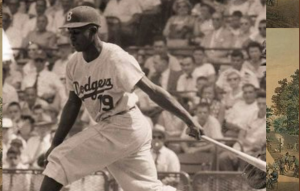
As a youngster growing up on the east coast of Canada in the 1950’s I fell in love with the Brooklyn Dodgers. There was just so much to love – Duke, Campy, Jackie, Newk, the two Carl’s (Erskine and Furillo), Gil, Pee Wee, and the list goes on. Don Drysdale was just starting to come into his own before the move to Los Angeles and Sandy Koufax had not yet blossomed. However, there were other lesser-known players that I always appreciated for the roles they played in the success of the Brooklyn Dodgers – Clem Labine, Jim Hughes, Billy Cox, Preacher Roe, Sandy Amoros, George “Shotgun” Shuba, Jim Gilliam and others.
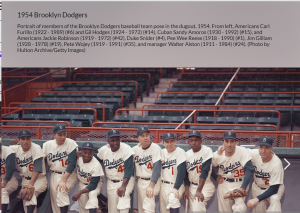
One of the lesser lights that particularly still stands out in my memory of those years with the Brooklyn Dodgers and later as a member of the Los Angeles Dodgers was “Mr. Versatility” and I think the prototypical utility player before the role was so defined and embraced by MLB. He did so I believe because he was a team player and confident in his abilities.
Jim “Junior” Gilliam was, in my opinion, the first real Dodger utility player and most certainly so in my lifelong career as a Dodger fan which now spans 70 years. Some will argue that Gilliam was not a utility player because he played his first two years with the Dodgers at second base. However, even in his second year, he began to branch out to other positions. Gilliam was indeed a utility player able to play several positions competently over the course of his career and with the confidence of his manager.
As a black player, Jim Gilliam’s path to major league baseball was not much easier than that of Jackie Robinson’s although Robinson had blazed a trail for him. However, his determination to not only get there but to excel as a major league player was not unlike that of his black teammates – Jackie Robinson, Roy Campanella, Don Newcombe, and Joe Black.

(Original Caption) Junior Gilliam, Jackie Robinson, Joe Black, and Roy Campanella at the Brooklyn Dodgers training camp at Vero Beach, Florida.
Gilliam was born in Nashville, Tennessee on October 27, 1928, and attended Pearl High School in Nashville. His early life was not easy as his father died when he was only two and his mother had to do housework to provide for him, her only child. She was able to buy him his first baseball glove when he was 14. Within two years he was earning a return on that investment by playing for the Crawfords, a local team, and getting paid to do so.
In 1946, just three years after getting his first glove, Jim Gilliam got a tryout with the Baltimore Elite Giants of the Negro National League. The tryout became a defining moment in his baseball career. Only 17 years of age at the time he made the team but perhaps, more importantly, Baltimore’s manager, George “Tubby” Scales, noticing that Gilliam had trouble hitting curveballs from a right-handed pitcher simply told him to go to the other side of the plate and a switch-hitter was born.
Additionally, Scales addressed the youngster as “Junior” and he became known as “Junior” Gilliam.
By 1950 he had been selected as an all-star three times to compete in the East-West Games. By now he was getting noticed by major league teams and a Chicago Cubs report stated he was “the best young prospect in the [then] Negro American League.”
The scouting report advised Gilliam was “a clean-cut youngster with an accurate snap throw, a good eye, a hustler with the knack for punching the ball to all fields.”
Gilliam’s contract was purchased by the Cubs but for whatever reason, it was decided he wouldn’t make it with the Cubs. One suggestion was that he wouldn’t be able to hit AAA pitching. Another was that the Cubs had a better prospect so there was no place for Gilliam to play. However, his future roommate with the Dodgers, Joe Black, felt that the reason was that he hadn’t played integrated ball and being socially shy the Cubs believed he could not adapt to major league baseball.
Fortunately, Gilliam was signed by the Dodgers in 1951 and by 1952 – at age 23 – he became the International League’s MVP. Playing for the Montreal Royals he hit .303 while leading the league with 133 runs scored along with 41 doubles and driving in 109 runs.
The Dodgers were looking for a leadoff hitter and it was his plate discipline that paved his path to Ebbets Field. With the AAA Royals in 1952, Gilliam walked 100 times while striking out only 18 times.
By the end of his rookie season with the Dodgers in 1953, he had started 146 games, been on base in 130 of them, and scored 125 runs along with a. 278 batting average, a .383 OBP and a .415 slugging percentage. He led the league with 17 triples and 710 plate appearances. Gilliam walked 100 times in 1953 setting a new walks record for rookies. At the end of the season, he was selected as the National League Rookie of the Year.
Jim Gilliam played 14 years with the Dodgers, the last two in 1965 and 1966 as a player-coach. He retired after the 1966 season and continued to coach with the Dodgers through manager Walter Alston’s reign which ended following the 1976 season. Tommy Lasorda and Jim Gilliam were the two leading contenders to replace Alston. Lasorda got the call and asked Gilliam to remain with the team as a coach. That was to be Gilliam’s only managerial interview.
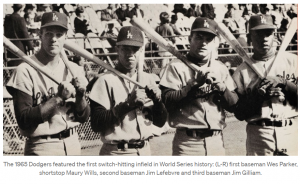
He never evolved into a star player, at least statistically, and some say it is because he played baseball the year around playing winter ball in Latin America between MLB seasons. However, he did evolve into the quintessential but yet undefined utility player. During his career, all with the Dodgers, he played 1,046 games at second base, 761 at third base, 203 in left field, 29 in right field, five in center field and two at first base. Offensively he accumulated 1,889 hits while walking 1,036 times and striking out 416 times finishing his career with a .265 batting average and an OBP of .360. He hit .266 from the left side and .261 as a right-handed hitter. By comparison, a modern-day super-utility player, Ben Zobrist, has a career batting average of .265 and an OBP of .355.
Gilliam was part of trade rumor speculation practically every season he played with the Dodgers. He started every season after his first one not being the leading candidate for any starting position, but for the 12 seasons, until he became a player-coach, he averaged 146 games played. In true Jamey Wright fashion, he had to win a spot each and every year after his rookie year. He was actually released by the Dodgers in both 1964 and 1965 and resigned as a free agent.
The 5’10” -175 lb switch-hitter had a baseball acumen that did not go unnoticed by his manager and fellow players. His greatest supporter was manager Walter Alston who perhaps above all others saw the need to keep Gilliam in the line up at some position because of his reliability, versatility, and durability.

Dodger first baseman Ron Fairly explained Alston’s fondness for Gilliam:
“He never missed a sign; all the years he played for Alston, Walt would say the one player who never missed a sign was Jim Gilliam,” Fairly stated.
In 1961 Alston added:
“He gets on base. He can punch the ball on the hit and run. He steals and never throws to the wrong base. He knows how to get a walk. He has all the little things that go to make up a good ball club. I don’t think he’s ever been late a day in his life.”
In 1962 Dodger shortstop Maury Wills stole 104 bases and was caught only 13 times. Little did we know that Wills was not working alone. He had Jim Gilliam batting behind him aiding and abetting in his thievery with a skill not gifted to many.
“I try to help him,” said Gilliam. “Lots of times there are pitches I could swing at, but I see Maury out of the corner of my eye and take the pitch if I think he’s going to get the base. Or else I’ll take a strike, even two strikes to give him a chance to steal it. If it looks like he could be caught, I’ll hit at the pitch. Maybe I’ll punch it through and Maury will be able to make it to third. Or else I’ll foul it off and he’s not out.”
“Not a man in baseball can do it better,” said coach Leo Durocher, “because Jim’s a real mechanic with that bat. He’s the best two-strike hitter in baseball.”
Bill James created a measure designed to be a proxy for Baseball IQ, a stat he called “Player Performance Index,” a combination of specific batting, running and defensive statistics meant to pull out “percentage players.” Gilliam ranks third all-time for that measure, behind only Cincinnati Reds second baseman Joe Morgan and Philadelphia Athletics second baseman Max Bishop.
Jim Gilliam’s life ended all too soon at the age of 49. On September 15, 1978, he drove manager Tommy Lasorda to Dodger Stadium and then returned home. He suffered a cerebral hemorrhage at home. He later died on October 8th one day after the Dodgers won the National League title.
Los Angeles Times sports columnist Jim Murray penned a tribute to Jim “Junior” Gilliam and began his tribute with these words:
“I guess my all-time favorite athlete was Jim Gilliam. He always thought he was lucky to be a Dodger. I thought it was the other way around.”
Jim Gilliam’s number “19” was retired on October 10, 1978. Among the ten Dodgers to have had their number retired he is the only one not to have been elected to the Baseball Hall of Fame. If there was a Hall of Fame for utility players, James William Gilliam would be a solid choice to be the first inductee.
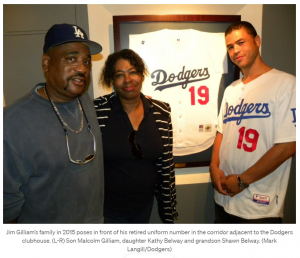
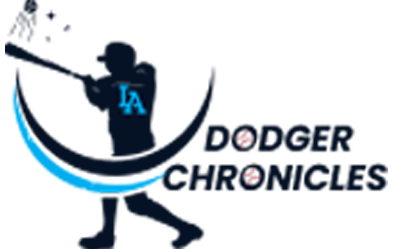






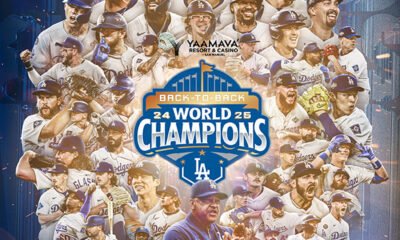





Junior was one of my early favorites. Thanks, Harold.
I thought last night’s game was a statement game. After two losses to the Mets and getting shellacked by the Padres, it was great to see the team come back so strongly. Who is this Treinen kid? Looked impressive. Julio, sans cap, always cracks me up. Maybe it’s time to appoint Mookie team captain.
Thanks.FV.
Price to the IL.
I think Ted Sizemore also did a great job of hitting behind Wills. Gilliam deserved to have his uniform number retired. If the Dodgers had a place to put multiple statues for groups without detracting from the individual statues of special players like Robinson and Koufax, I would like to see a mid-fifties group and another for the infield of Cey, Russel, Lopes, Garvey, and maybe Yeager.
Fun game last night. Betts is now tied with Pederson for the most homeruns (33) in a year at leadoff. One more game and that stat will be his.
I like your idea of the group statues, Fred. With this team’s incredibly rich history, I think there would be room all around the stadium for that without taking away from the single player statues. I vote yes.
If, for some reason, they didn’t want to do it at the Ravine, there’s all kinds of room around Camelback, although I’d still prefer Dodger Stadium.
Nice job Harold, I did one on Junior not too long ago. He was always one of my favorite players and he was the ultimate team player.
Thanks OB48.
As a teenager in my mddle teens, I really liked Jim Gilliam. It was not until some time later when I better understood the nature of the game and the nature of a baseball team that I came to really apprecaite what Gilliam did as a skilled individual and a team player.
How about this hard observation on Cody Bellinger?
Good for you Jerry! Nice to see he doesn’t think his entire role on the broadcast is to act as a shill for the team and only throw out positive comments. And, of course, what he says, is entirely correct.
We may never know if Belli’s failure to regain his past success is due to poor coaching (I would be very surprised if that were the answer) or more likely Cody’s stubbornness in continuing to do things which are not working.
Someone apparently asked him why he uses that straight up stance with the bat at the angle he keeps it at and his answer was that he was comfortable that way. If all it took to hit a baseball at the major league level was to be comfortable, I could head out to the stadium today and be the cleanup hitter.
What does surprise me is that the team has allowed him to continue doing what he’s doing for the past couple of years with very little success. Others have pointed out that his stance forces him to move his head while the pitch is coming and that makes it almost impossible to get the job done. And that’s only one of many basic hitting principles which Belli is ignoring.
Maybe once Cody is playing for someone else, people inside the Dodger organization will speak more freely about this continuing and very frustrating saga, although I’m guessing that he won’t be an ex-Dodger until 2024.
I also think that Jerry was taking a swipe at RVS, saying the same thing many people have said. You cannot teach about how to handle ML pitch movement if you have never seen it. You have no idea how to adjust. All that is spouted is theory. That is basically what Jerry said without naming names. If he in fact is just ignoring what the coaches are advising, then he should be sitting. A 76 OPS+ for a starting CF for a championship team is unacceptable no matter how good defensively he is. And I like Cody Bellinger. But he has to produce or sit. But I agree with you. He will be a LAD next year at or around $18MM. I do not think he gets a $3MM raise based on what he has done this year. Nobody is going to trade for an $18MM defensive CF. Houston can use a CF. NYY can use a CF. NYM will pay for Nimmo before they trade for Belli. Philly? SF? Cubs? What organization with $$$ might be willing to trade a couple of rookie level lottery tickets for Belli. The Dodgers will hold on to him and let him go FA after next season, and wish him luck.
How long have we heard that the Dodger offensive approach was to build up the pitch count for the starters. Mookie has generally been deliberate with his approach, but it was Trea who told him to be more aggressive. Go for that pitch/strike. Don’t give the pitcher strike 1. Freddie has not changed a lick on his approach or swing. Lux’s improvement has been due to the tutelage of Freddie. JT was a launch angle devotee well before SVS entered the clubhouse. SVS’ big three protegees, Muncy, CT3, and Belli are not producing at the championship level. They have the best offense because of Mookie, Trea, Freddie, Fresh Prince, JT, and Lux. None of those (except maybe Smith) have been mentored by SVS. Now Trayce has added to that offense, and I cannot address what has changed for him. Maybe SVS has had a positive affect on him. I am not saying that SVS cannot change an individual’s swing for the positive. JDM is a great example of what he can do at the individual level. But team strategy and making adjustments, he has not done well at. The Dodgers lead the world in offense, because they have great offensive players, not because of the coaching.
I will say that the back foot lift for Max was a great find… for awhile. In his last 7 games he is hitting .148/.233/.148/.381 (4 singles in 27AB). His last 15 games he is hitting .179/.284/.304/.588.
That’s interesting Jeff.
Have you heard anything about dissatisfaction with Van Scoyoc?
I’ve heard nothing but accolades, but really nobody talks about batting coaches so anything is rare and intermittent.
More behind the scenes than anything specific. It is hard to hear negative comments about the #1 offense. But a couple of scouts I know say that the effect of RVS is overblown, but then again, hitting coaches generally get too much credit and too much blame. They advised me that Brant Brown is the more communicative of the three hitting coaches for whatever that is worth (not much I admit). I just thought it was very telling what Jerry Hairston Jr. said about coaches who have never faced MLB pitching. I have also heard it from previous players, talking generalities, not specifically about any coach current or former.
It’s my position that both Muncy and Bellinger are still recovering from injury. I believe they know what they need to do and will do it this winter. Will it be too late? Yeah, maybe. It will be difficult to replace what they did, an MVP and 35 home runs a year, but, this is the Dodgers. They’ll find a way.
I don’t think Bellinger is very smart. Sure, he can catch the ball with the best of them, but so could my golden retriever, and he only cost $300.00. Watching him bat is painful. I can understand Hairston’s frustrations. I see him as lazy and selfish. Maybe a change of scenery may help, but I doubt it. His biggest problem is between his ears. He is wasting what should be his most productive years.
Hopefully, this is a positive sign for the Tony Gonsolin and the Dodgers.
I draw a distinction between Dodger Hero and Favorite Dodger. For me the Dodger Hero is someone who has an outstanding event that changed the outcome. For me, my first Dodger Hero was Larry Sherry for what he did in the 1959 WS. But at the time, and throughout his career (and beyond), Junior Gilliam was my favorite Dodger. He was my favorite over Sandy Koufax and Don Drysdale, and Maury Wills, and Tommy Davis. He was my first jersey. He is also the reason why I loved Lee Lacy over Davey Lopes.
Thank you Harold for writing this article. You have known for awhile how I felt about Junior. He was special for me at a time in my young life when I needed hope.
Rip Repulski. It was the name.
Johnny Roseboro because I was a catcher. Maury Wills because of his speed and position. Hodges and Koufax because they were Hodges and Koufax, but Tommy Davis was my favorite Dodger in the early 60’s. He was my first Dodger autograph and he could hit. In fact, he was at the time the only Dodger who could hit. And could he hit. I learned how to hit line drives from him. Used his approach through to my last year of playing competitive baseball.
Xx
Pepiot, 2 innings. He just has to do better.
More like Pepe Le Pew tonight.
This game is. tough watch from home.
In the heat, it looks like nobody wants to be there.